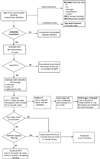Transfusion and coagulation management in major obstetric hemorrhage
- PMID: 25812005
- PMCID: PMC4567035
- DOI: 10.1097/ACO.0000000000000180
Transfusion and coagulation management in major obstetric hemorrhage
Abstract
Purpose of review: Major obstetric hemorrhage is a leading cause of maternal morbidity and mortality. We will review transfusion strategies and the value of monitoring the maternal coagulation profile during severe obstetric hemorrhage.
Recent findings: Epidemiologic studies indicate that rates of severe postpartum hemorrhage (PPH) in well resourced countries are increasing. Despite these increases, rates of transfusion in obstetrics are low (0.9-2.3%), and investigators have questioned whether a predelivery 'type and screen' is cost-effective for all obstetric patients. Instead, blood ordering protocols specific to obstetric patients can reduce unnecessary antibody testing. When severe PPH occurs, a massive transfusion protocol has attracted interest as a key therapeutic resource by ensuring sustained availability of blood products to the labor and delivery unit. During early postpartum bleeding, recent studies have shown that hypofibrinogenemia is an important predictor for the later development of severe PPH. Point-of-care technologies, such as thromboelastography and rotational thromboelastometry, can identify decreased fibrin clot quality during PPH, which correlate with low fibrinogen levels.
Summary: A massive transfusion protocol provides a key resource in the management of severe PPH. However, future studies are needed to assess whether formula-driven vs. goal-directed transfusion therapy improves maternal outcomes in women with severe PPH.
Figures



Similar articles
-
Obstetric hemorrhage and coagulation: an update. Thromboelastography, thromboelastometry, and conventional coagulation tests in the diagnosis and prediction of postpartum hemorrhage.Obstet Gynecol Surv. 2012 Jul;67(7):426-35. doi: 10.1097/OGX.0b013e3182605861. Obstet Gynecol Surv. 2012. PMID: 22926249 Review.
-
Postpartum hemorrhage: a continuing challenge.Hematology Am Soc Hematol Educ Program. 2015;2015:132-7. doi: 10.1182/asheducation-2015.1.132. Hematology Am Soc Hematol Educ Program. 2015. PMID: 26637712 Review.
-
Medical advances in the treatment of postpartum hemorrhage.Anesth Analg. 2014 Nov;119(5):1140-7. doi: 10.1213/ANE.0000000000000450. Anesth Analg. 2014. PMID: 25329026 Review.
-
Postpartum hemorrhage management in 2012: predicting the future.Int J Gynaecol Obstet. 2012 Oct;119(1):3-5. doi: 10.1016/j.ijgo.2012.07.001. Epub 2012 Aug 4. Int J Gynaecol Obstet. 2012. PMID: 22867727
-
Point-of-care viscoelastic testing improves the outcome of pregnancies complicated by severe postpartum hemorrhage.J Clin Anesth. 2018 Feb;44:50-56. doi: 10.1016/j.jclinane.2017.10.003. Epub 2017 Nov 7. J Clin Anesth. 2018. PMID: 29121548
Cited by
-
Management of postpartum haemorrhage.F1000Res. 2016 Jun 27;5:F1000 Faculty Rev-1514. doi: 10.12688/f1000research.7836.1. eCollection 2016. F1000Res. 2016. PMID: 27408694 Free PMC article. Review.
-
RBC Inventory-Management System Based on XGBoost Model.Indian J Hematol Blood Transfus. 2021 Jan;37(1):126-133. doi: 10.1007/s12288-020-01333-5. Epub 2020 Nov 2. Indian J Hematol Blood Transfus. 2021. PMID: 33707845 Free PMC article.
-
Patient Blood Management in Pregnancy.Transfus Med Hemother. 2023 Jan 6;50(3):245-255. doi: 10.1159/000528390. eCollection 2023 Jun. Transfus Med Hemother. 2023. PMID: 37435001 Free PMC article. Review.
-
Thromboelastography Reference Values for Third-Trimester Healthy Obstetric Patients in Northern Mexico.Anesthesiol Res Pract. 2025 Mar 6;2025:8871619. doi: 10.1155/anrp/8871619. eCollection 2025. Anesthesiol Res Pract. 2025. PMID: 40225040 Free PMC article.
-
Thromboelastometry-guided treatment algorithm in postpartum haemorrhage: a randomised, controlled pilot trial.Br J Anaesth. 2023 Feb;130(2):165-174. doi: 10.1016/j.bja.2022.10.031. Epub 2022 Dec 7. Br J Anaesth. 2023. PMID: 36496259 Free PMC article. Clinical Trial.
References
-
- Khan KS, Wojdyla D, Say L, et al. WHO analysis of causes of maternal death: a systematic review. Lancet. 2006;367:1066–1074. - PubMed
-
- Cantwell R, Clutton-Brock T, Cooper G, et al. Saving Mothers' Lives: Reviewing maternal deaths to make motherhood safer: 2006–2008. The Eighth Report of the Confidential Enquiries into Maternal Deaths in the United Kingdom. BJOG. 2011;118(Suppl 1):1–203. - PubMed
-
-
Creanga AA, Berg C, Syverson C, et al. Pregnancy-related mortality in the United States, 2006–2010. Obstet Gynecol. 2015;2015:5–12. This report provides the most recent maternal mortality data in the United States between 2006–2010. In this report, 11.4% of maternal deaths were due to obstetric-related hemorrhage, with ruptured ectopic, other or unspecificied, atony or other uterine bleeding, and abnormal placentation being the most common etiologies
-
-
- Bateman BT, Berman MF, Riley LE, Leffert LR. The epidemiology of postpartum hemorrhage in a large, nationwide sample of deliveries. Anesth Analg. 2010;110:1368–1373. - PubMed
Publication types
MeSH terms
Substances
Grants and funding
LinkOut - more resources
Full Text Sources
Other Literature Sources
Medical
Research Materials

